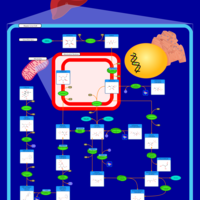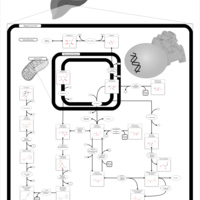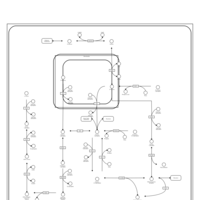| Description | Glyceraldehyde 3-phosphate (G3P) (CAS: 591-59-3), also known as triose phosphate, belongs to the class of organic compounds known as glyceraldehyde-3-phosphates. Glyceraldehyde-3-phosphates are compounds containing a glyceraldehyde substituted at position O3 by a phosphate group. Glyceraldehyde 3-phosphate is an extremely weak basic (essentially neutral) compound (based on its pKa). Glyceraldehyde 3-phosphate has been detected, but not quantified in, several different foods, such as sea-buckthorn berries, lingonberries, prunus (cherry, plum), quinoa, and sparkleberries. This could make glyceraldehyde 3-phosphate a potential biomarker for the consumption of these foods. Glyceraldehyde 3-phosphate is an aldotriose, an important metabolic intermediate in both glycolysis and gluconeogenesis, and in tryptophan biosynthesis. G3P is formed from fructose 1,6-bisphosphate, dihydroxyacetone phosphate (DHAP), and 1,3-bisphosphoglycerate (1,3BPG). This is the process by which glycerol (as DHAP) enters the glycolytic and gluconeogenesis pathways. |
|---|
| InChI Identifier | InChI=1S/C3H7O6P/c4-1-3(5)2-9-10(6,7)8/h1,3,5H,2H2,(H2,6,7,8)/t3-/m0/s1 |
|---|
| Pathways | | Name | SMPDB/PathBank |
|---|
| Fructose and mannose metabolism |    | | pentose phosphate pathway |    | | Oxidative phosphorylation |    | | Glycolysis |    | | Glycerol Phosphate Shuttle |    | | Gluconeogenesis |    | | Glycogen Storage Disease Type 1A (GSD1A) or Von Gierke Disease |    | | Glucose-6-phosphate dehydrogenase deficiency |    | | Ribose-5-phosphate isomerase deficiency |    | | Transaldolase deficiency |    | | Glycogenosis, Type VII. Tarui disease |    | | Phosphoenolpyruvate carboxykinase deficiency 1 (PEPCK1) |    | | Fructosuria |    | | Fructose-1,6-diphosphatase deficiency |    | | Triosephosphate isomerase |    | | Fanconi-bickel syndrome |    | | Glycogenosis, Type IB |    | | Glycogenosis, Type IC |    | | Glycogenosis, Type IA. Von gierke disease |    | | Warburg Effect |    | | Fructose intolerance, hereditary |    |
|
|---|